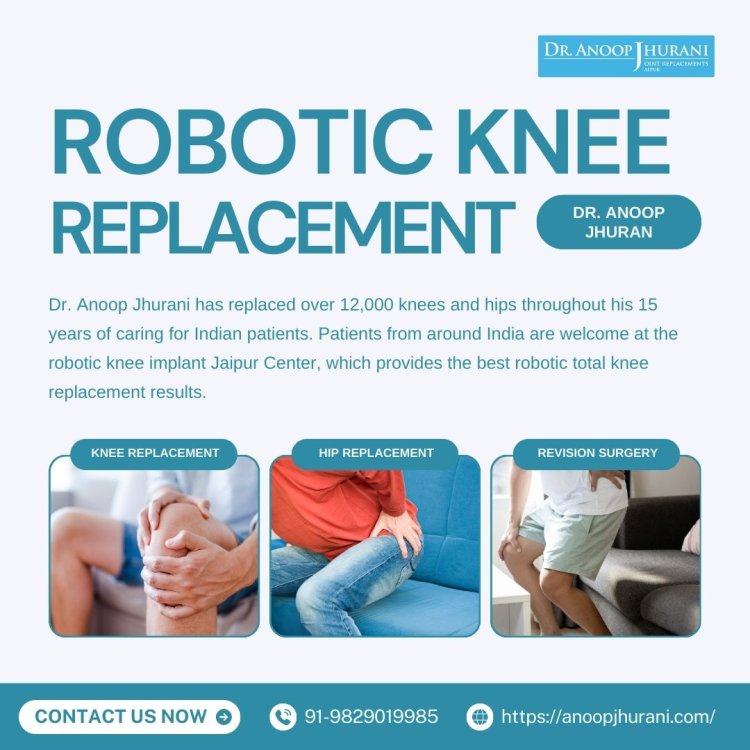How is Robotic Knee Replacement Surgery Performed
Dr. Anoop Jhurani is a Robotic knee replacement doctor in Jaipur, India. Book an appointment online with Dr. Anoop Jhurani for treatment.
Share this Post to earn Money ( Upto ₹100 per 1000 Views )

Robotic knee replacement surgery represents a significant advancement in orthopedic care, combining the precision of robotics with the expertise of highly trained surgeons. This innovative approach allows for more accurate, minimally invasive procedures that lead to faster recovery times and better overall outcomes for patients. Dr. Anoop Jhurani, a leading Robotic knee replacement surgeon in Jaipur, India, is at the forefront of performing robotic-assisted total knee replacement surgeries with exceptional results.
The Process of Robotic Knee Replacement Surgery
1. Preoperative Planning: Before the surgery, a comprehensive preoperative plan is created using advanced computer software. This involves taking detailed 3D images of the patient’s knee joint through CT scans or MRIs. These images provide crucial data about the patient’s unique anatomy, enabling the surgeon to plan the procedure with high precision.
2. Patient-Specific Data: The patient-specific data obtained from the imaging tests is fed into the robotic system. This data helps create a virtual model of the patient’s knee, which the surgeon uses to plan the exact placement of the implant. The virtual model allows the surgeon to simulate the procedure and make adjustments to ensure optimal outcomes.
3. Robotic Assistance: During the surgery, the robotic-assisted arm, guided by the preoperative plan, is used to perform the procedure. The robotic system provides real-time feedback and adjustments, ensuring that the implant is placed with utmost accuracy. The boundaries of the robotic arm are determined by the patient-specific data, allowing the surgeon to precisely balance and position the joint components.
4. Precision and Control: The robotic system enhances the surgeon’s precision and control, allowing for more accurate cuts and placement of the implant. This minimizes the risk of human error and ensures that the prosthetic components are perfectly aligned, leading to better joint function and longevity of the implant.
5. Minimally Invasive Technique: Robotic knee replacement surgery typically involves smaller incisions compared to traditional methods. This minimally invasive approach reduces damage to surrounding tissues, resulting in less postoperative pain and faster recovery times. Patients experience fewer complications and can return to their daily activities more quickly.
Advantages of Robotic Knee Replacement Surgery
· Increased Accuracy: The robotic system provides highly accurate information, allowing for precise implant placement.
· Improved Balance and Alignment: The surgeon can achieve optimal alignment and balance of the joint components, leading to better functionality and longevity.
· Reduced Blood Loss: The minimally invasive technique results in less blood loss during the procedure.
· Faster Recovery Time: Patients benefit from shorter recovery times and can resume their normal activities sooner.
· Lower Risk of Complications: The precision and control offered by the robotic system reduce the risk of complications and the need for revision surgeries.
Conclusion
Robotic knee replacement surgery is a revolutionary approach that combines advanced technology with surgical expertise to provide patients with accurate, minimally invasive, and highly effective treatment for knee joint issues. Under the expert care of Dr. Anoop Jhurani, patients can experience the benefits of this state-of-the-art procedure and achieve a better quality of life with improved joint function and reduced pain.







